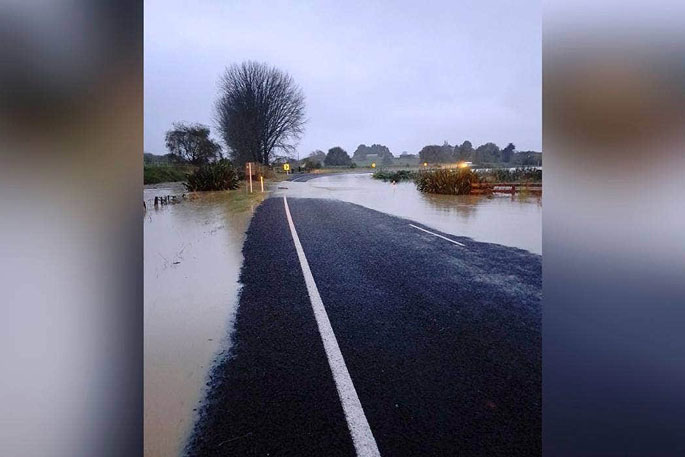A multi-year, multi-stage project by Bay of Plenty Regional Council to upgrade the flood defences in Whakatāne is scheduled to begin in January 2024.
Project Future Proof will work to replace or improve the existing stopbanks and floodwalls along the CBD stretches of the Whakatāne River / Ōhinemataroa, from McAlister Street pump station to the Muriwai Drive Playground.
Flooding is the most common natural hazard in Aotearoa, with a major flood event occurring on average every eight months.
Engineering Manager Mark Townsend says flood protection is the first line of defence when it comes to minimising and managing the risk of significant flood events to people, property and livelihoods.
“That’s why we need to upgrade the current CBD flood defences - to handle the weather events we’re experiencing now, while allowing for the future impacts of climate change that are predicted to come.”
Mark says there are two key reasons why this work needs to be done. The first is to repair the areas where there is ‘seepage’.
“Seepage is when water passes through a stopbank when the river level is high. While controlled seepage is good for relieving pressure within the stopbanks, excessive, uncontrolled seepage can lead to stopbanks collapsing, putting people, property and livelihoods at risk.”
The second reason is to adapt to meet the challenges of more frequent, more significant events that may cause flooding – something communities across New Zealand are working to address.
“Through our Long Term Plan, we have a ‘level of service’ for our flood protection that we have agreed on with the community. This means we must provide flood protection that can withstand a flood event of a certain size and scale.
“In the case of Whakatāne CBD, the flood protection needs to be able to meet a 1per cent annual probability event (AEP) through to 2040. This is an event of a significant size and scale – for example, at that time, the July 2004 flood event was a 1 per cent AEP.
“To achieve this level of service, the flood defences need to be upgraded to protect the town against the future impacts of a changing climate, such as increased rainfall and sea level rise.”
Stage One of the project is due to begin early 2024. This will focus on the area from the McAlister Street pump station through to the iSite.
Where there are stopbanks (McAlister Street pump station to the Yacht Club), the Regional Council will be increasing the size (width and height) of the existing stopbank by filling it with more earth.
Where there are floodwalls (Yacht Club to the iSite), the existing floodwall will be replaced.
This will involve driving large steel sheet piles into the ground to form a wall. This wall will then be covered in concrete panels, creating a floodwall that will range in height from 0.6m to a maximum height of 1.7m (this is for a 50m stretch next to the iSite).
A design and/or narrative will be etched into the concrete floodwall to enhance the look of the wall along the walkway.
To make way for the bigger and better flood defences, Mark says the Regional Council will also improve pedestrian access onto the Warren Cole Walkway from the shopping area across the road and vehicle access into the Yacht Club car park.
“We have been working closely with Whakatāne District Council and Te Rūnanga o Ngāti Awa to achieve this. Together, our vision is to create a space along the waterfront that functions well in increased, heavy weather events, while ensuring the community can continue to feel connected to the awa.”
For more information and FAQs, visit boprc.govt.nz/future-proof
You can also contact the project team on engineering@boprc.govt.nz or 0800 884 880



0 comments
Leave a Comment
You must be logged in to make a comment.